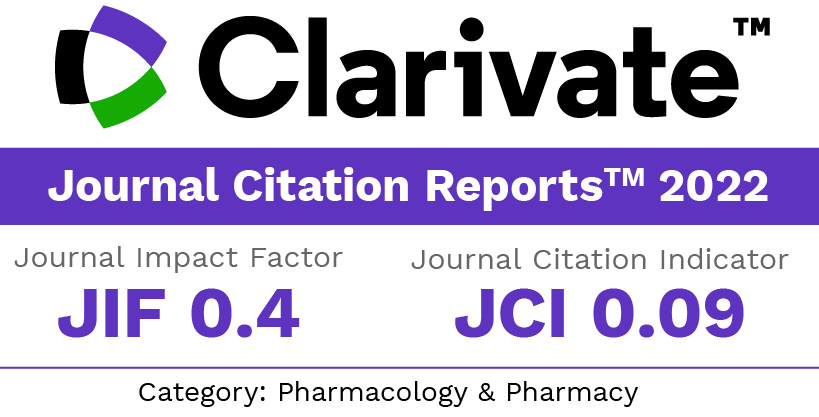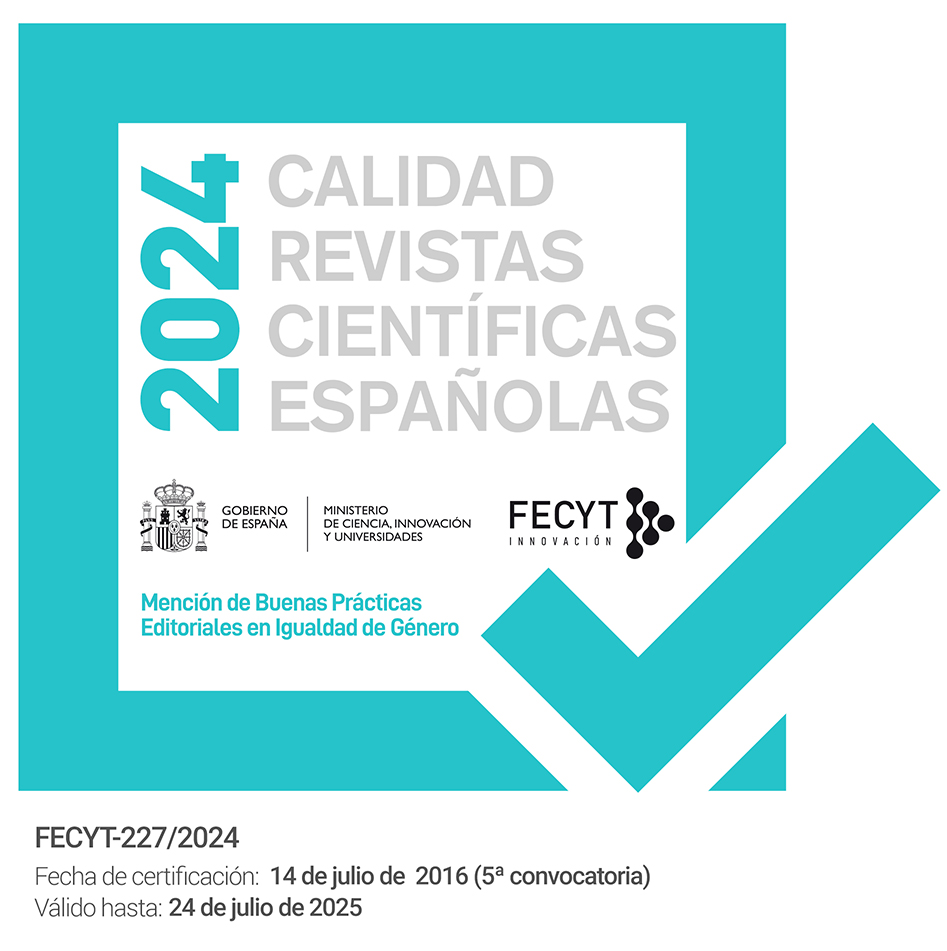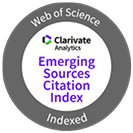Evaluation of the antimicrobial activity of the alcoholic extract of Tagetes erecta against bacteria and fungi of clinical importance
DOI:
https://doi.org/10.30827/ars.v66i4.33109Keywords:
Tagetes erecta, antimicrobial activity; maceration.Abstract
Introduction: Antibiotic resistance is a significant global health concern, putting at risk treatment options for infectious diseases. As a result, treatments can be expensive and ineffective, so it is essential to look for new options such as the use of plant extracts with antimicrobial properties to combat these diseases. Tagetes sp is a plant species that is used in folk medicine to cure various diseases and has several properties among which the antimicrobial.
Method: The antimicrobial activity of the extract was analyzed by the Kirby-Bauer method at different concentrations.
Results: The extract showed antimicrobial activity by presenting inhibition halos mainly against Staphylococcus aureus (S. aureus), obtaining the following results: S. aureus ATCC 43300 (19,400 ± 0.435 mm to 500 mg/mL); S. aureus ATCC 6538 (11,206 ± 0.342 mm to 750 mg/mL); Acinetobacter baumannii ATCC 19606 (10.570 ± 0.535 mm a 250 mg/mL); Proteus mirabilis (7.636 ± 0.196 mm to 250 mg/mL) and Issatchenkia orientalis ATCC 6258 (7.400 ± 0.190 mm to 250 mg/mL). Secondary metabolites such as tannins, quinones, coumarins, phenolic compounds and flavonoids were determined.
Conclusions: Tagetes erecta L alcoholic extract has antimicrobial activity against clinically relevant strains and may be considered for further studies against multi-resistant microorganisms in the future.
Downloads
References
Lin J, Nishino K, Roberts MC, Tolmasky M, Aminov RI, Zhang L. Mechanisms of antibiotic resistance. Front Microbiol. 2015; 6:1-3.doi:10.3389/fmicb.2015.00034
Frieri M, Kumar K, Boutin A. Antibiotic resistance. J Infect Public Health. 2017;10: 369-378. doi:10.1016/j.jiph.2016.08.007
Urban R, Marek A, Stępień D, Wieczorek K, Dec M, Nowaczek A, Osek J. Antibiotic Resistance in Bacteria—A Review. Antibiotics. 2022; 11: 1079. doi:10.3390/antibiotics11081079
Mancuso G, Midiri A, Gerace E, Biondo C. Bacterial Antibiotic Resistance: The Most Critical Pathogens. Pathogens. 2021; 10(10): 1310. doi:10.3390/pathogens10101310
Kulshrestha M, Tiwari M, Tiwari V. Bacteriophage therapy against ESKAPE bacterial pathogens: Current status, strategies, challenges, and future scope. Microb Pathog. 2024; 186:106467. doi:10.1016/j.micpath.2023.106467
Uchil RR, Kohli GS, Katekhaye VM, Swami OC. Strategies to combat antimicrobial resistance. J Clin Diagn Res. 2014; 8(7): ME01-4. doi: 10.7860/JCDR/2014/8925.4529
Parmanik A, Das S, Kar B, Bose A, Raj G, Monohar M. Current Treatment Strategies Against Multidrug-Resistant Bacteria: A Review. Curr Microbiol. 2022; 79: 388. doi:10.1007/s00284-022-03061-7
Shin J, Prabhakaran V, Kim K. The multi-faceted potential of plant-derived metabolites as antimicrobial agents against multidrug-resistant pathogens. Microb Pathog. 2018; 116: 209-214. doi:10.1016/j.micpath.2018.01.043
Singh Y, Gupta A, Kannojia P. Tagetes erecta (Marigold). A review on its phytochemical and medicinal properties. Curr Med Drug Res. 2020; 4(1). doi:10.53517/CMDR.2581-5008.412020201
Maji A, Beg M, Das S, Nasima Mt, Nayim Sk, Patra A, Maidul Md, Hossain M. Study on the antibacterial activity and interaction with human serum albumin of Tagetes erecta inspired biogenic silver nanoparticles. Process Biochem. 2020; 97: 191-200. doi:10.1016/j.procbio.2020.07.017
Ali Z, Jasim T, Alani W. Antibacterial Activity of Chloroform Extract from Tagetes erecta L. Flowers, AJPS. 2019; 19(4): 7-15. doi:10.32947/ajps.19.04.0414
Singh Y, Gupta A, Kannojia P. Tagetes erecta (Marigold) - A review on its phytochemical and medicinal properties. Curr Med Drug Res. 2020; 4 (1): 1-6. doi: 10.53517/CMDR.2581-5008.412020201
Marcano D, Hasegawa M. Fitoquimica Orgánica. 3ra. ed. Venezuela: Universidad central de Venezuela Consejo de desarrollo científico y humanístico; 2018.
Guzmán D. Guía de prácticas de Química Forestal. Universidad Nacional Agraria La Molina. Facultad de Ciencias Forestales. Dpto. Industrias Forestales. 2013, Perú. Disponible en: https://www.studocu.com/pe/document/universidad-nacional-agraria-la-molina/fisico-quimica/guia-quimica-forestal-laboratorio-2020i/24131541 [consultada el 13 de junio de 2023].
Clinical and Laboratory Standards Institute. M02-A11 Performance Standards for Antimicrobial Disk Susceptibility Tests; Approved Standard-Eleventh Edition, 2012; 32(1): 1-58.
IBM Corp. Released 2023. IBM SPSS Statistics for Windows, Version 29.0.2.0 Armonk, NY: IBM Corp.
Cantón E, Martin E, Espinel A. Métodos estandarizados por el CLSI para el estudio de la sensibilidad a los antifúngicos (documentos M27-A3, M38-A y M44-A). Revista Iberoamericana de Micología. 2007. https://www.researchgate.net/publication/269399354_Metodos_estandarizados_por_el_CLSI_para_el_estudio_de_la_sensibilidad_a_los_antifungicos_documentos_M27-A3_M38-A_y_M44-A.
Kadam P, Bhingare C, Sumbe R, Nikam R, Patil M. Pharmacognostic, Physicochemical and Phytochemical investigation of Tagetes erecta linn flowers (Asteraceae). J Biol Sci Opin. 2013;1: 21-24. doi:10.7897/2321-6328.01124
Camacho C, Pérez Y, Valdivia A, Ramírez HL, Gómez L. Propiedades fitoquímicas y antibacterianas de extractos de Tagetes erecta L. (Asteraceae). Rev Cub Quim. 2019;31(1).
Padalia H, Chanda S. Antimicrobial Efficacy of Different Solvent Extracts of Tagetes erecta L. Flower, Alone and in Combination with Antibiotics. Appli Micro Open Access. 2015;1(1): 1000106. doi: 10.4172/2471-9315.1000106
Laganà P, Anastasi G, Marano F, Piccione S, Singla RK, Dubey AK, Delia S, Coniglio MA, Facciolà A, Di Pietro, A, Haddad MA, Al-Hiary M, Caruso G. Phenolic substances in foods: health effects as antiinflammatory and antimicrobial agents. J AOAC Int. 2019; 102(5): 378-1387. doi:10.1093/jaoac/102.5.1378Lagrou
Hamdi N, Puerta MC, Valerga P. Synthesis, structure, antimicrobial and antioxidant investigations of dicoumarol and related compounds. Eur J Med Chem. 2008; 43(11): 2541-2548. doi: 10.1016/j.ejmech.2008.03.038.
Algammal A, Hetta H, Elkelish A, Alkhalifah D, Hozzein W, Batiha G, Nahhas N, Mabrok M. Methicillin-Resistant Staphylococcus aureus (MRSA): One Health Perspective Approach to the Bacterium Epidemiology, Virulence Factors, Antibiotic-Resistance, and Zoonotic Impact. Infect Drug Resist. 2020;13: 3255-3265. doi:10.2147/IDR.S272733
O’Neill J. Antimicrobial Resistance: Tackling a crisis for the health and wealth of nations. Review on Antimicrobial Resistance. 2014. Disponible en: https://amr-review.org
Chokshi A, Sifri Z, Cennimo D, Horng H. Global Contributors to Antibiotic Resistance. J Glob Infect Dis. 2019;11(1):36-42. doi: 10.4103/jgid.jgid_110_18.
Latifian E, Otur C, Abanoz B, Arslanoglu S, Kurt A. Evaluation of antimicrobial activity in extracts of different parts of three Tagetes species. Turk J Field Crops. 2021; 26(1):117-122. doi: 10.17557/tjfc.950272
Müller C, Reuter S, Wille J, Xanthopoulou K, Stefanik D, Grundmann H, Higgins PG, Seifert H. A global view on carbapenem-resistant Acinetobacter baumannii. Mbio. 2023; 14(6): e02260-23. doi:10.1128/mbio.02260-23
Nandita D, Shivendu R, Proud S, Rahul J, Swati M, Mohamed S. Antibacterial Activity of Leaf Extract of Mexican Marigold (Tagetes erecta). Against Different Gram Positive and Gram Negative Bacterial Strains. J Pharm Pract Res. 2012; 5(8):4201-4203.
Varahi VA, Alphienes X, Darling D. In-vitro Evaluation of Antifungal and Anticancer Properties of Tagetes erecta Petal Extract. Biomed Pharmacol J. 2019; 12(2): 815-823. doi:10.13005/bpj/1705
Downloads
Published
How to Cite
Issue
Section
License
Copyright (c) 2025 Gabriel Martínez González, Alejandro, Frida, Jorge, Sandra, Angélica, Lidia

This work is licensed under a Creative Commons Attribution-NonCommercial-ShareAlike 4.0 International License.
The articles, which are published in this journal, are subject to the following terms in relation to the rights of patrimonial or exploitation:
- The authors will keep their copyright and guarantee to the journal the right of first publication of their work, which will be distributed with a Creative Commons BY-NC-SA 4.0 license that allows third parties to reuse the work whenever its author, quote the original source and do not make commercial use of it.
b. The authors may adopt other non-exclusive licensing agreements for the distribution of the published version of the work (e.g., deposit it in an institutional telematic file or publish it in a monographic volume) provided that the original source of its publication is indicated.
c. Authors are allowed and advised to disseminate their work through the Internet (e.g. in institutional repositories or on their website) before and during the submission process, which can produce interesting exchanges and increase citations of the published work. (See The effect of open access).























